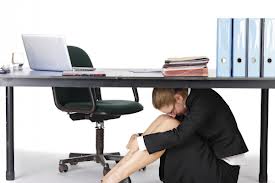Blog
Although we originally posted this blog in 2014, we thought it was prudent to re-post in light of the earthquake near Christmas 2015.
Each year it seems we all rotate the same resolutions in order to achieve a longer life: eat healthier, exercise more or quit a bad habit. All of these changes are controllable throughout the whole year, but what about unexpected events that can threaten your life? Unfortunately many people don’t think about emergency preparedness until they hear about a disaster that has happened somewhere else.
What if the disaster hits closer to home? Are you and your family prepared? Do you have an emergency plan?
Instead of recycling those usual and tired resolutions, this year make a resolution for you and your family to be safe. To help you out we at SOS Emergency Response Technologies have come up with 3 quick and easy steps to achieve this goal, so you can sit back and boast to your friends that you accomplished your resolutions for the year.
Step one – Check the batteries in your smoke detector.
Step two – Check your first aid kits. Take a look and see if any products are expired and need to be replaced. If you don’t have a first aid kit we recommend our General Purpose First Aid Kit FK1021 $14.95.
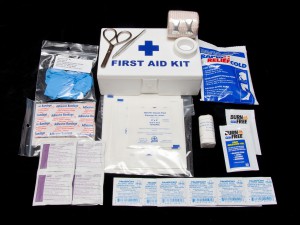
Step three – Check your emergency preparedness kit and update your emergency plan/contacts if needed. If you use bottles of water they have to be replaced yearly. Emergency Food Ration Bars and Emergency Sterile Water Packets last longer (5 years). Double check your contact lists to make sure it is up to date with current information and remind your family about the emergency plan you put in place. If you don’t have an emergency plan there are many sources on the internet. These days we find ourselves working and running errands at all hours of the day so the chances of your family being split up when a disaster hits are larger. Make sure you set a meeting point.
If you don’t have an emergency preparedness kit SOS Emergency Response Technologies has a variety of options to choose from. We have kits for 1, 2 and 4 person families and have economical versions as well.

That’s all there is to it! Although, there are a few extra steps you could take to make sure those around you are safe as well. Ask the human resources team if your workplace has an emergency plan as well as emergency kits. If you are on the safety committee make a point to bring it up at the next meeting and set up an emergency plan for your work place. SOS Emergency Response Technologies can also provide emergency preparedness kits and products for your workplace.
Blog
Are you ready for a severe emergency? Many businesses are not adequately prepared and as a result 40% of businesses affected by a major emergency or disaster never reopen.
It is tempting to believe that accidents and emergencies will never occur at your workplace, but the reality is that emergencies can occur anywhere, any time. And the fact is that most businesses just are not adequately prepared. A 2013 emergency preparedness survey conducted by Staples found that less than half of employers report being prepared for severe emergencies, and nearly 40 percent said their small business does not have emergency safety training or drills.
But according to Bob Risk, senior strategic safety, health, and preparedness manager for Staples, “It’s much easier to prepare for an emergency than to explain why you didn’t.”
The heart of your preparation is an emergency action plan (EAP) that covers the actions the company and employees must take to ensure safety in a crisis. You should train employees on the EAP as you would train them on any safety or health program. Frequent practice drills are an important part of ongoing emergency training.
Once employees are familiar with the basic procedures to follow in an emergency, it can be beneficial to introduce obstacles into your drills that mirror unforeseen circumstances that could occur during a real emergency. For example, force employees to use an alternate exit route, or plan for some key personnel to be absent so that their backups get a chance to practice their emergency duties.
And in order to succeed, an emergency plan must also be embraced by employees. After all, incidents don’t discriminate, and when an emergency hits, the impact is not limited to managers and safety committee members. No matter what type of workplace emergency your company may face, you can be prepared to respond effectively and help protect employees, property, and resources. Don’t wait for disaster to strike – take action now and put an emergency plan in place.
Call SOS Emergency Response Technologies today 604.277.5855 and one of our Health & Safety Consultants can help you prepare. Our staff can consult on your WorkSafeBC first aid requirements, safety needs and/or earthquake preparedness interests.

Blog
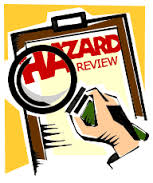 WorkSafeBC inspectors may suggest that they are just trying to “get the facts,” but every question they ask is designed to get the evidence they need. You should always be on your toes and follow the military maxim, “Never volunteer.” Inspectors are like TV interviewers. They’re trying to get the information they need, and they know that you are unlikely to volunteer anything that will be damaging to your case. As a result, they resort to indirect questions. Furthermore, they often phrase these questions carefully, trying to make it look as if you are being given a chance to exonerate yourself, or justify questionable procedures.
WorkSafeBC inspectors may suggest that they are just trying to “get the facts,” but every question they ask is designed to get the evidence they need. You should always be on your toes and follow the military maxim, “Never volunteer.” Inspectors are like TV interviewers. They’re trying to get the information they need, and they know that you are unlikely to volunteer anything that will be damaging to your case. As a result, they resort to indirect questions. Furthermore, they often phrase these questions carefully, trying to make it look as if you are being given a chance to exonerate yourself, or justify questionable procedures.
Dealing with safety inspectors requires balance and common sense. Never lose sight of the fact that they are professionals, and that they are looking for information that may not make you or your company look good. On the other hand, inspectors are doing an important job, helping to protect the health and safety of your employees.
Keep the following guidelines in mind:
• Never be rude. Even when you think that you should not cooperate, be polite, but firm. Personal animosity will only make a bad situation worse.
• Be cautious. Never volunteer anything. Never grasp at an opportunity to put yourself or your employer in a good light. Why not? Think about it. How often have you listened to people talk themselves out of a job by responding too carelessly to your carefully crafted questions? The same could be true in this case. Choose your words carefully.
• If in doubt, you can refuse to answer a question. In most cases, you can ultimately be compelled to respond, but many times the matter will not be pursued. If it is, you’ll have time in the interim to consult with counsel as to the best approach.
Don’t
• Demonstrate any activities or operations for the inspector
• Volunteer any information
• Volunteer any records not requested
• Make any admissions of guilt
Do
• Designate one qualified, knowledgeable person to be the liaison with the inspectors, and train the person accordingly
• Examine a warrant carefully
• Duplicate the inspector’s tests and actions
• Indicate trade secret area
• Prepare, with the help of counsel, a standard operating procedure for handling inspectors
• Conduct your own safety audits regularly, making sure that this important “quality control” element is part of your compliance program
Blog
Guest blog by Jan Kirkpatrick, President, First Edition First Aid Training Inc., National Philips AED Distributor
Philips AED’s in the Workplace? Absolutely. They are saving lives.
The national survival rate, for cardiac arrest (with EMS/Fire responding) is less than 5%. Locations that house an AED may experience survival rates as high as 70-100%. This is because lay-people are able to bring the AED to the patient in less than 4 minutes.
After calling 911 and turning on a Philips AED, the unit will coach the rescuer through the emergency until EMS/Fire is able to respond and take over patient care. This is one of the key pieces to the substantial increase in workplace cardiac arrest survival.
Cardiac arrest saves (and survival) are occurring across Canada as a result of basic CPR training and the quick responses of co-workers, friends and families.
Philips AED’s are designed to be used by the ordinary person in an extraordinary moment. They are the fastest, safest, most user-friendly AED’s on the market and require no regular scheduled maintenance.
Protect your employees and clients by becoming a ‘heart-safe workplace’.
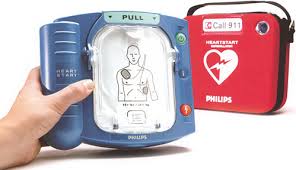
Blog
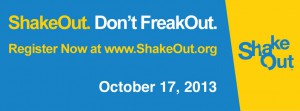
On October 17th, a locally-driven, world wide “Drop, Cover, and Hold On” drill will take place called The Great ShakeOut. All residents, agencies, businesses, and organizations across the world are encouraged to take part in the largest earthquake drill in history! Register here http://shakeoutbc.ca/
With this fantastic event only 2 weeks away, we thought it be a great time to share some earthquake safety steps with you:
Before the next big earthquake we recommend these steps that will make you, your family, or your workplace better prepared to survive and recover quickly:
- Secure your space – identify hazards, secure bookshelves and heavy furniture
- Plan to be safe – create a family emergency response plan, have a meeting place
- Organize emergency supplies – ensure you have enough emergency food and water for a minimum of 72hrs. It should be easy to carry in case you have to evacuate
- Minimize financial hardship – organize important documents; keep copies in an alternative location if possible
During the next big earthquake, and immediately after, is when your level of preparedness will make a difference in how you and others survive and can respond to emergencies:
- Drop, Cover & Hold – when the ground starts to shake
After the immediate threat of the earthquake has passed, your level of preparedness will determine your quality of life in the weeks and months that follow
- Ask for feedback on how the drill went.
- Schedule the next drill for one year later (or sooner).
- Share photos and stories at Share the ShakeOut.
- Encourage your staff to prepare at home
